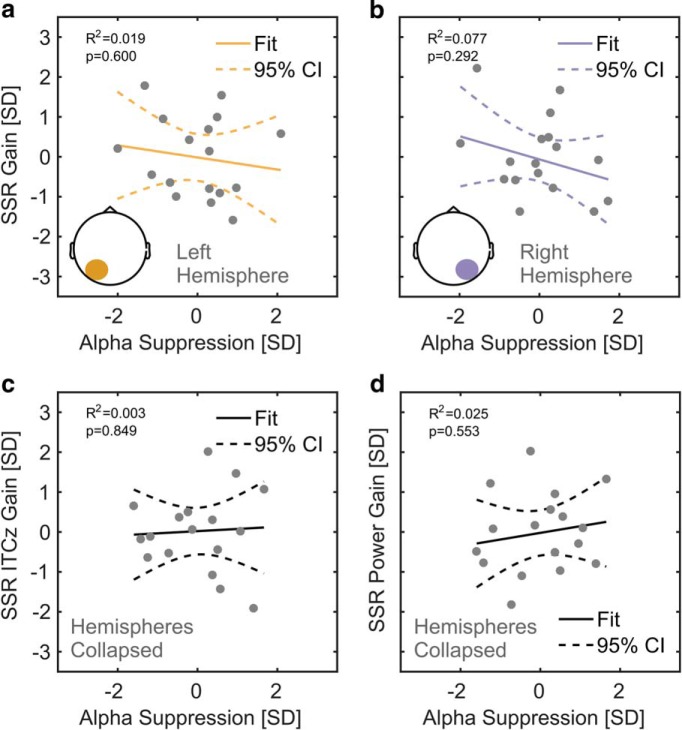Figure 5.
Relationships between attention effects on alpha power and SSRs. a, Individual 10 Hz (left stimulus) SSR evoked power gain (attended − ignored; z-scored, y-axis) as a function of alpha suppression (ignored − attended; z-scored, x-axis) in overlapping left-hemispheric parieto-occipital electrode clusters. Gray dots represent participants. Colored lines depict a straight line fit and its confidence interval (dashed lines). The goodness of fit of the linear model provided as R2 along with corresponding p value. As confirmed by additional tests, both attention effects do not show a positive linear relationship that would be expected if the ipsilateral SSR power gain effect was a consequence of the ipsilateral alpha suppression. b, Same as in a, but for the 12 Hz SSR driven by the right stimulus in overlapping right-hemispheric parieto-occipital electrode clusters. c, d, Similar to a but for attention-related gain effects on SSR ITCz (z-scored, y-axis) in c and gain effects on SSR evoked power in d, both collapsed across electrode clusters showing 10 and 12 Hz SSR attention effects. Alpha suppression was collapsed across left- and right-hemispheric electrode clusters (Fig. 3).

